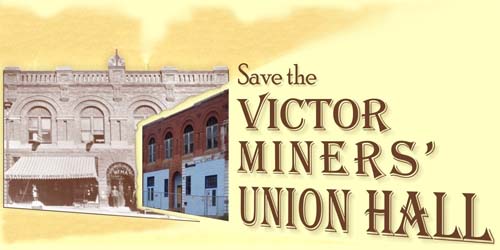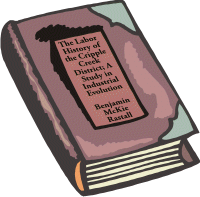 |
Victor
|
THE LABOR HISTORY OF
THE
CRIPPLE CREEK DISTRICT
A STUDY IN INDUSTRIAL EVOLUTION
by Benjamin McKie Rastall

pages 1-11
BY
BENJAMIN McKIE RASTALL
Economic Expert, New York State Department of Labor
A THESIS SUBMITTED FOR THE DEGREE Of DOCTOR OF PHILOSOPHY
UNIVERSITY OF WISCONSIN
1906
(REPRINTED FROM THE BULLETIN OF THE UNIVERSITY OF WISCONSIN ECONOMICS AND POLITICAL SCIENCE SERIES, VOL. 3, PP. 1-166)
MADISON, WISCONSIN
1908
BULLETIN OF THE UNIVERSITY OF WISCONSIN
NO. 198
Economics And Political Science Series, Vol. 3, No. 1, PP. 1-166
Published bi-monthly by authority of law with the approval of the Regents of the University and entered at the post office at Madison as second-class matter
MADISON, WISCONSIN
February, 1908
PREFACE
The Labor History of Cripple Creek is the result of investigations carried out upon the ground, and covering a period of several years. The material for the narrative of the strike of 1894 was secured in 1902 and early in 1903, shortly before the opening of the second strike. This was fortunate in that, a considerable period having elapsed and the most friendly conditions prevailing, the second strike being no more than a faint suggestion upon the horizon, the men concerned could be induced to speak more frankly and with less conscious partisanship than would have been possible at any other time. It also gave the author knowledge of the exact situation and conditions under which the second strike had its formation, and enabled him to follow the course of events with more accuracy than would have been possible under any other circumstances.
During the strike of 1903-04 the author was a resident of Colorado, part of the time of Colorado Springs, and the summer season of 1905 was spent in Teller County, largely in completing the investigations for this monograph. The most important material for the work has been gained through interviews, over 300 in number, with men in a position to have an intimate knowledge of various phases of the difficulties. Information has been sought from most of the union officers and many prominent union men; from nearly all the county and state officers in any way directly concerned; and from many others who from close personal experience could speak with authority of various incidents of the strike. It was originally intended to publish a list of the interviews with the bibliography, and to make free use of them in footnotes showing authority. Owing, however, to the recentness and intensity of the last strike, the resulting tension is in some cases strong. It has seemed wise to preclude the possibility of embarrassment or injury resulting from the very frankness and courtesy which has made the accuracy of the study possible, and for that reason names are withheld. It should be understood that frequently where only documentary evidence is cited, and always where no authority is given, reliable testimony has come from authentic personal sources.
The manuscript of the narrative part of the work (Part II, Chap. VI, and all footnotes, excepted) has been submitted to residents of Colorado selected so as to include both political parties, both county and state authorities, and both those whose general sympathies were with the mine owners and those who sympathized with the unions. They were those who seemed to the author to combine the largest actual knowledge of the disturbances with the most conservative and unbiased judgment. Their criticism and suggestion has proved of very great value. The same reasons as given above prompt the withholding of the names.
To Professor Thomas K. Urdahl of Colorado College, at whose suggestion the work was originally undertaken, and whose advice and suggestion have been of the greatest value throughout, the author is deeply indebted.
The history of the Cripple Creek District is one of rapid and spectacular growth. The sudden rise of a complete social fabric in a mountain wilderness, and the transformation of a barren area to a center producing $2,000,000 a month, form the background of an equally rapid industrial development which finds its chief exponent in the mining labor movements. The district forms a small but distinct physiographical and political area. Within this area the stages of a complete industrial evolution have been passed through in a little more than a decade. Starting with primitive, frontier labor conditions, there was a rapid succession of stages ending in extreme capitalization and extraordinary organization. Gathering the strength of forces shut in unto themselves, and keeping pace with the other rapid developments, the labor-capital issues finally broke forth in a conflict worthy the name revolution. The very momentum of the movement carried it through the entire known gamut and on beyond the experiences of its time, and with almost the entire section arrayed on one side or the other, and to the accompaniment of boundless political turmoil, it fought itself out to the finish. A working model is ever of great importance, and this intense miniature of great present day forces and issues has a content of valuable suggestion.